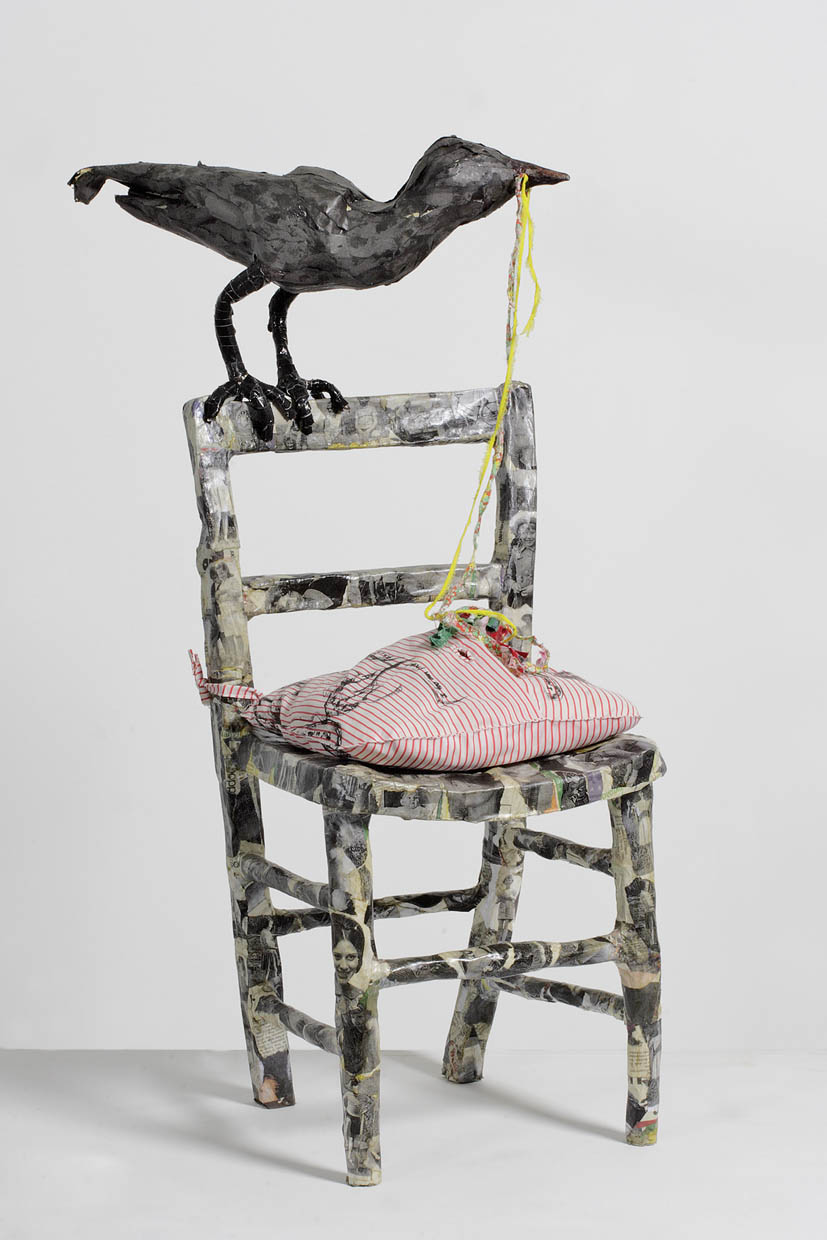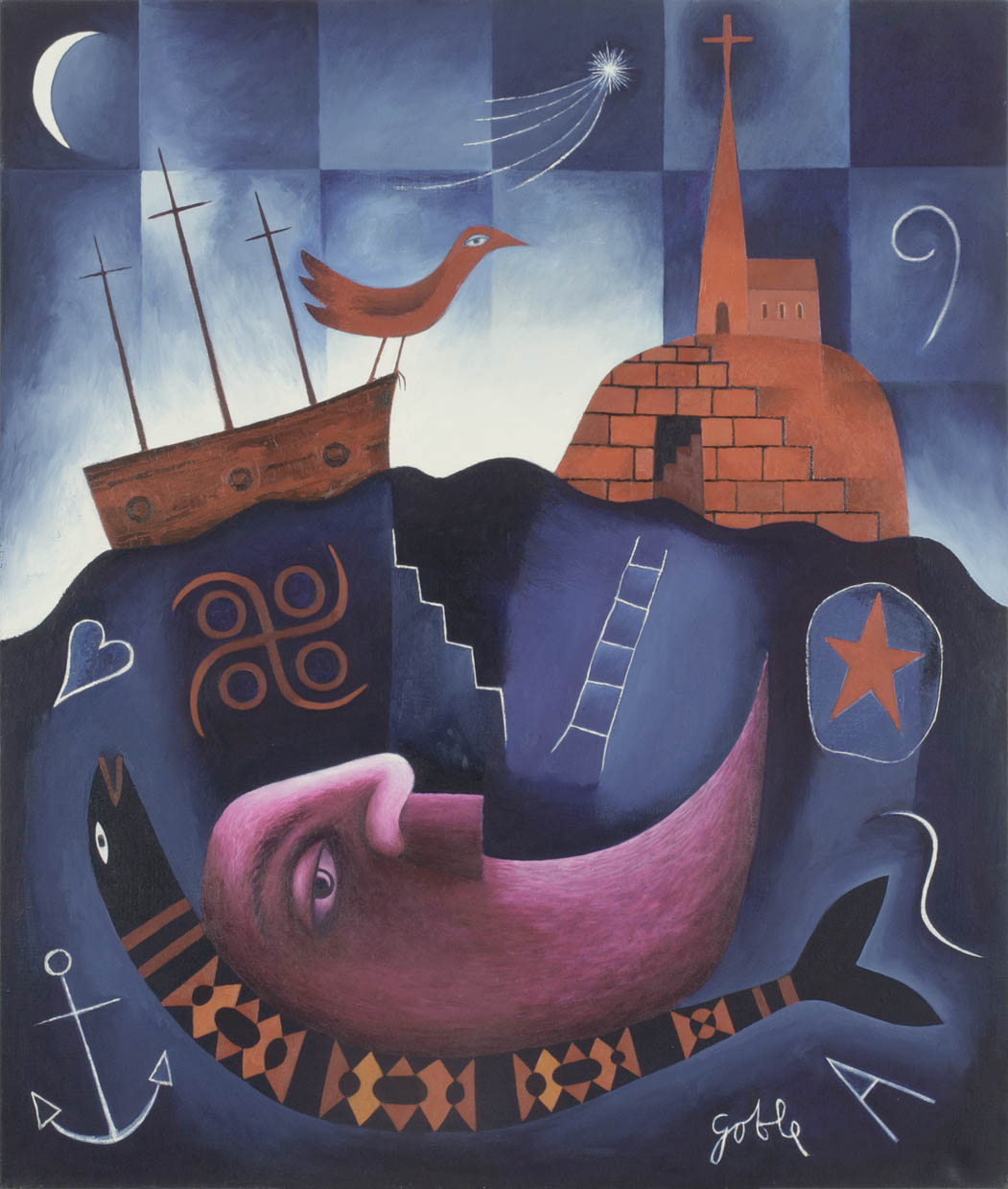Mapping the Welsh Group at Sixty: The Exhibition
03.06.09
The Welsh Group originated as the South Wales Group in 1948. By 1975 it had become a fully professional group and had adopted its present name. It currently embraces around forty members - still predominantly living in south and mid Wales - who include some of the best-known and most well-regarded artists in Wales. A carefully researched and presented major exhibition to commemorate its sixtieth year is, consequently, an event to savour.
Originated by the Welsh Group in association with the National Library of Wales, curated by Ceri Thomas of the University of Glamorgan and grant-supported by the Arts Council of Wales, Mapping the Welsh Group at 60 opened at the National Library in Aberystwyth on 8 November last year. It toured to the Royal Cambrian Academy in Conwy and it will be shown until 13 June at Newport Museum & Art Gallery. There is an impressive catalogue which I shall discuss in an upcoming edition of Planet.
The exhibition focuses upon the Group’s last decade from 1998 until 2008. It explores the work of the Group following its fiftieth anniversary which was celebrated with an exhibition curated by Peter Wakelin at the National Museum of Wales. The exhibitions had different aims and take contrasting approaches. The former assessed, over a period of fifty years, members’ wide-ranging styles in an art-historical context. Ceri Thomas, in surveying recent work, has structured the exhibition around dominant themes in the artists’ work. He travelled extensively to visit artists and select work and it is a characteristically thorough survey.

Crow on a Chair by Lynne Bebb. (Photo courtesy Newport Museum).
The most extensive showing of Mapping the Welsh Group at 60 was held at the National Library of Wales. Around one hundred works - two from each member - were carefully arranged in the Gregynog Gallery. The large space was well used for dramatic effect. There are few exhibition spaces comparable in size to this in Wales and so, inevitably, showings at other venues involved fewer works. I did not see the showing in Conwy but at Newport it has only been possible to show half the number of works with one from each artist. A consequence of this, I sense, is that the exhibition has lost much of its original impact.
Nevertheless, the exhibition in Newport is a rare opportunity to see a consistent selection by Ceri Thomas of fine works by Group members over the past decade which highlight their considerable creativity, imagination and diverse styles. It may also be the last opportunity to see an exhibition by the Group including work by Peter Bailey, William Brown, Tony Goble, Bert Isaac, David Tinker, Laurie Williams and Ernest Zobole, all of whom died in the survey period.
Ceri Thomas has devised an intriguing scheme for arranging the works thematically into four categories. This approach provokes reflection upon the subject preoccupations of Group members and creates a framework for displaying and discussing the works. The categories are defined as: i. Land / Sea; ii. Memory / Myth / Place; iii. Body / Mind / Figure / Symbol; and iv. Nature / Still Life / Abstraction / Assemblage.
These categories of theme are, inevitably, not mutually exclusive and I find this a little confusing, particularly in relation to the work of some of the artists with which I am most familiar. Maybe this stems from the fact, as explained in the catalogue, that: “…the selected works provided the primary clues for the four thematic groupings …” Bim Giardelli & Claudia Williams’s work is as much figurative in its concerns as with the sea, which Ceri Thomas acknowledges. Mary Fogg, much of whose work concerns figures in the sea, could have been included with them, but was not. Tony Goble’s work would seem to me to have fitted just as - if not more - comfortably into ‘Myth, Memory and Place’. Many of Arthur Giardelli’s assemblages, too, are very much concerned with the rhythms of the sea. And what, too, of artists whose themes might be the use of colour or of materials? I suspect that these concerns expose the elusive nature of art as much as the difficulty of categorisation.

Poet by Tony Goble. (Photo courtesy of the Newport Museum.)
For good communication the arrangement of an exhibition should reflect clearly its structure. Even in the full version in Aberystwyth I felt that the divisions between sections could have been emphasised better. A system of colour-coding - outlined in the catalogue - escaped my notice until late in the visit. At Newport the four themed categories have been mixed too much. Only the third section is contained in one space. Having said that, the works at Newport are often well-hung and well-lit even though I felt that, in some cases, strong works were hung too close together. This would seem to highlight the problems associated with installing exhibitions designed for a particular space elsewhere. Nevertheless, all those involved - and particularly Ceri Thomas - should be congratulated on the successful completion of a stimulating project.
David Moore